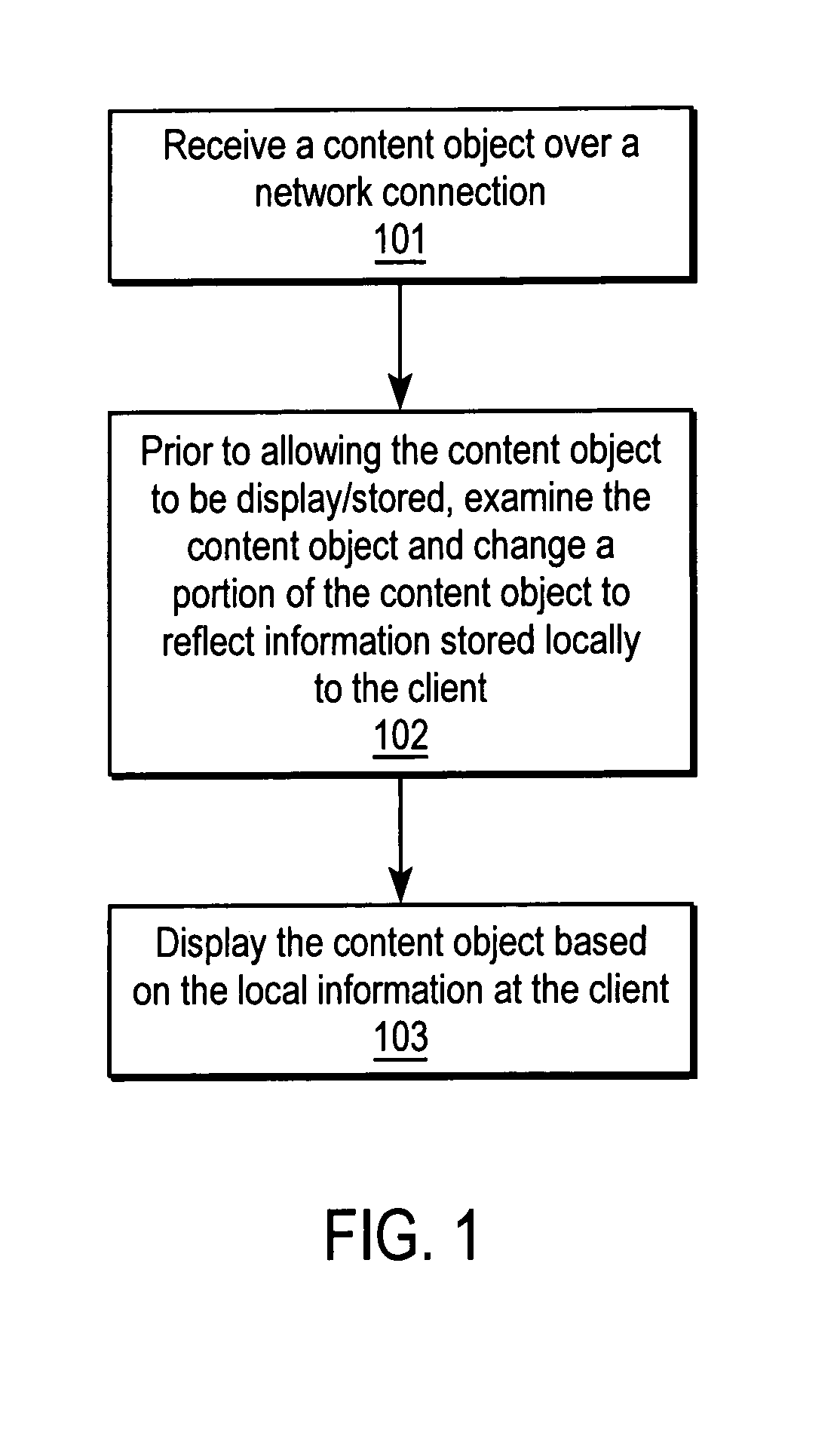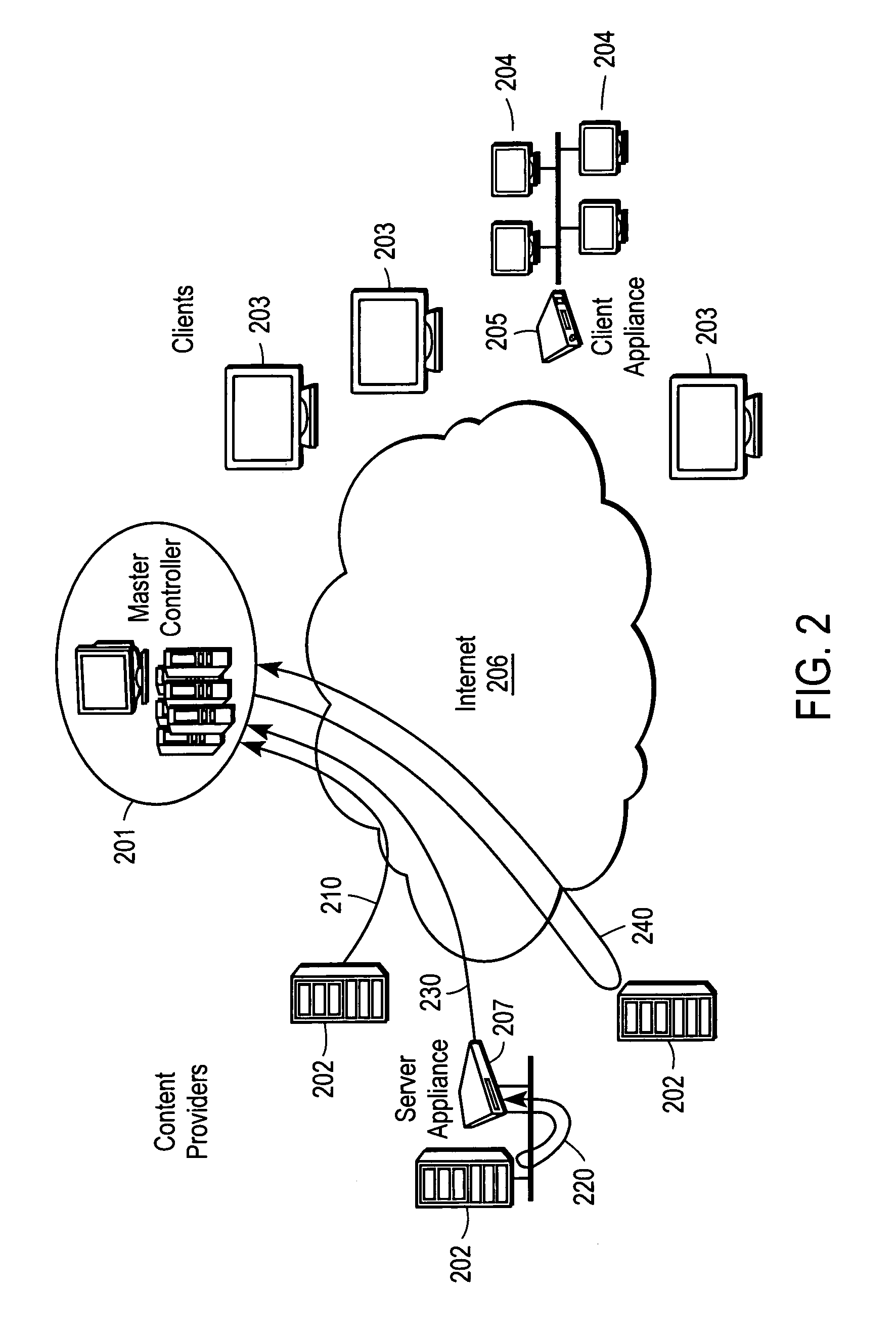Manipulating content objects to control their display
a technology of manipulating content objects and manipulating content objects, applied in the field of content precaching, can solve the problems of bandwidth limitation, poor performance especially for bandwidth-intensive applications, and often painfully slow internet backbon
- Summary
- Abstract
- Description
- Claims
- Application Information
AI Technical Summary
Problems solved by technology
Method used
Image
Examples
Embodiment Construction
[0023]A method and apparatus for processing content objects prior to their display is described. In one embodiment, the method comprises a client receiving a content object over a network connection, the client, prior to allowing the content object to be dynamically displayed or stored, examining the content object and changing a portion of the content object to reflect information stored locally to the client, and dynamically displaying the content object changed based on the local information at the client.
[0024]The content objects may include web pages, video files, audio files, source code, executable code, programs (e.g., games), archives of one or more of these types of objects, databases, etc. A chapter, for purposes herein, is a set of content objects classified according to content.
[0025]In the following description, numerous details are set forth. It will be apparent, however, to one skilled in the art, that the present invention may be practiced without these specific det...
PUM
 Login to View More
Login to View More Abstract
Description
Claims
Application Information
 Login to View More
Login to View More - R&D
- Intellectual Property
- Life Sciences
- Materials
- Tech Scout
- Unparalleled Data Quality
- Higher Quality Content
- 60% Fewer Hallucinations
Browse by: Latest US Patents, China's latest patents, Technical Efficacy Thesaurus, Application Domain, Technology Topic, Popular Technical Reports.
© 2025 PatSnap. All rights reserved.Legal|Privacy policy|Modern Slavery Act Transparency Statement|Sitemap|About US| Contact US: help@patsnap.com



